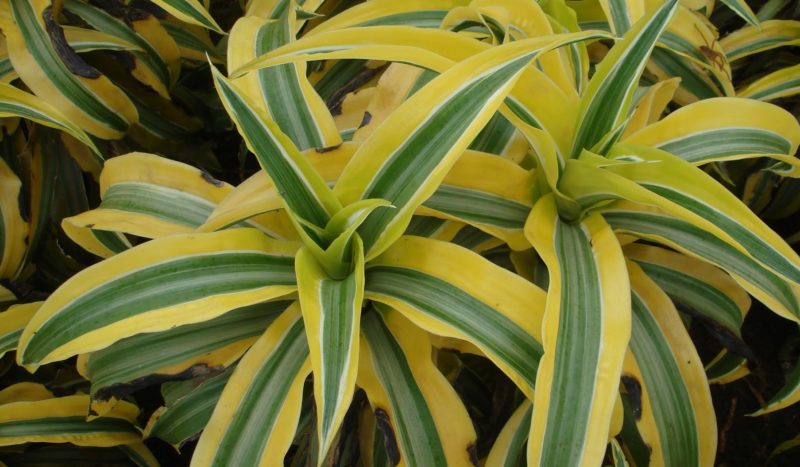
Let’s Talk Dracaena
Draceana are one of the most popular and diverse families in the ornamental plant world. From small to large, there is a type of dracaena to fit your conditions and needs. In addition to the different sizes, there are also a large range of plants from green to variegations with many different colors. Some of the most common species are deremensis, fragrans, reflexa and sanderiana.
GROWING DRACAENA
Dracaena are typically propagated by vegetative methods which can incorporate many different processes. The most common types are tip cuttings, stem cuttings, air layers, as well as cane production depending on the species. In all methods, rooting is a relatively easy process for dracaena. The addition of IBA will aid in better rooting.
The most common insect issues for dracaena are mites, mealy bugs, scale and thrips. The most common disease issues to look out for are Fusarium and Erwinia. In addition, dracaena can also be very sensitive to fluoride toxicity.
If you are using city water for irrigation, the fluoride injected can cause tip burn on the dracaena leaves. Symptoms of this toxicity include tip and margin burn. Avoid using fertilizers that contain superphosphate as they typically have higher levels of fluorine.
The soil mix for dracaena should be well drained. To avoid rot, plants should be allowed to dry between irrigations. The humidity for dracaena should be maintained above 40%. If the humidity does drop below 40%, plants can benefit from an occasional misting of the foliage. This will be more of an issue at the customer level, than the production facility.
TYPES
Dracaena deremensis, which is part of fragrans, include the popular varieties of warneckii and ‘Janet Craig’. The warneckii have leaves that are striped in shades of gray, green and white. The variety ‘Lemon Lime’ also has yellow variegations. ‘Janet Craig’ dracaena have solid green leaves. These plants make great houseplants with their ability to tolerate lower light levels. Plants are best indoors in bright light, but not direct sun. They do best in temperatures in the mid 1970s to early 1980s.
Dracaena fragrans includes the very popular massangeana, also known as corn plant or Chinese Money tree. They are typically produced by canes and are often used with multiple cane sizes withina pot. They will perform well in the same conditions as the deremensis. Plants will flower in optimal conditions, releasing a very pleasant aroma, particularly at night. Once a stalk flowers, it will split and create multiple breaks. These plants can tolerate full sun, with adequate humidity. They will also survive well indoors with bright light.
Draceana reflexa incorporates the frequently produced varieties of ‘Song of India’ (green and yellow striping) and ‘Song of Jamaica’ (multi shade green striping). They both originate from Madagascar and other Indian Ocean islands. They can tolerate full sun to partial shade. Indoors they will perform best with bright light, but can tolerate lower light levels for extended periods of time.
One of the most commonly used dracaena is the Dracaena reflexa var. angustifolia. These are the plants most commonly referred toas Marginata. As with massangeana, these are often sold as multi-level canes or braids, but are also sold as a multi cutting bush in larger pots and as individual plants in smaller pots. The most commonly sold varieties are Marginata, Bicolor, Colorama, Magenta and Kiwi.
In tropical environments, these can grow in full sun, but will survive low light conditions in the home. It is important to watch your water levels on these as they can quickly succumb to overwatering.Marginatas have a lower requirement for fertilizer than most other dracaena. They will do best with half of the rate as the others.
Dracaena sanderiana include the common gold (yellow and green) and white (white and green) varieties as well as ‘Lucky Bamboo’. Although they do resemble the growth of bamboo, they are not actually in the bamboo family. They can be produced in soil as well as hydroponically. Plants will do well in full sun in tropical environments and bright indirect light indoors.
Dracaena have been proven to remove toxins from the air. According to the NASA Clean Air Study, Dracaena reflexa is one of the most efficient plants at removing formaldehyde from the air in your home, as well as other VOCs, including benzene, trichloroethylene and xylene.
With all the beauty that can be had with the many different types of dracaena as well as their positive properties to clean our air, they should definitely be a plant that is in your greenhouse and home.


 Video Library
Video Library 




















